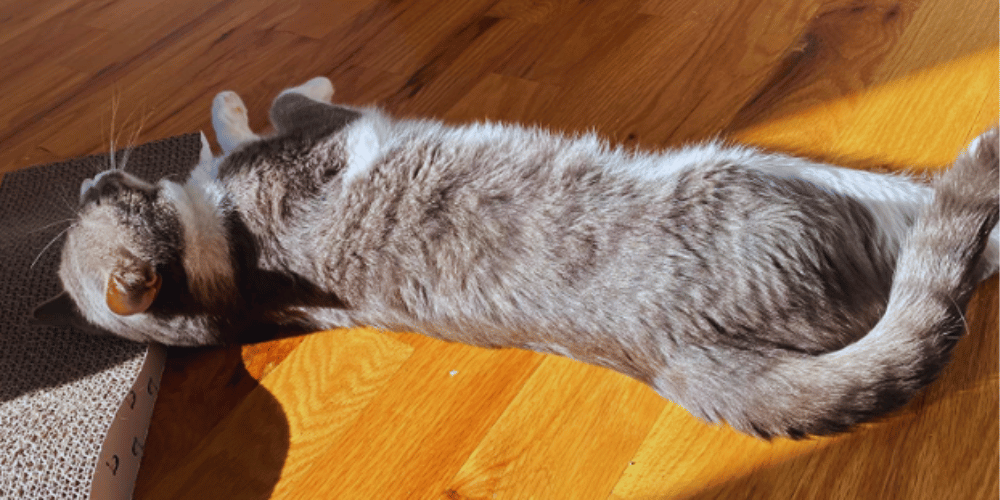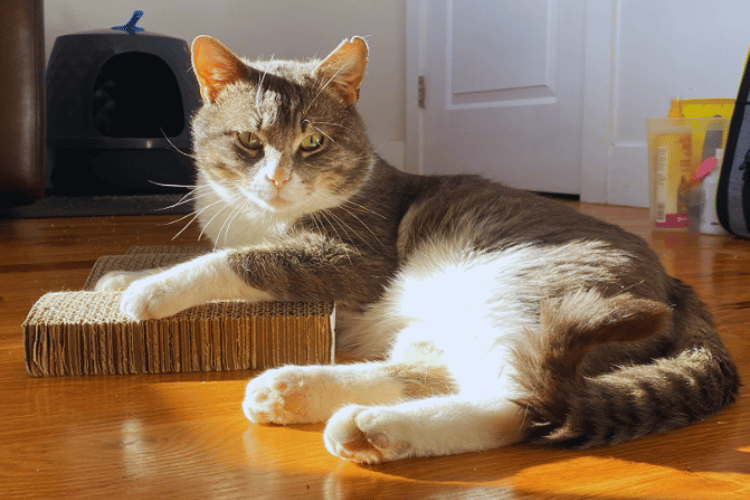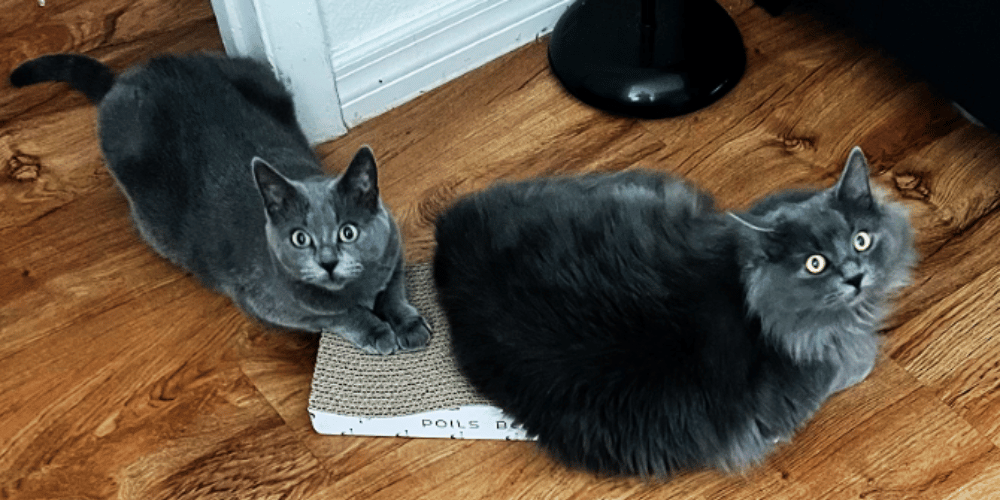If you're a cat owner, then you know how important it is to keep your furry friend happy and entertained. Scratching can be an essential part of that – allowing felines to engage in instinctual behavior while also getting out any stress or aggression they are feeling.
But when it comes to finding the right scratching surface for your kitty, what material do cats like best? In this article, we'll dive into why scratching posts are so important for cats and the different materials available that can help ensure your pet's claws stay healthy and strong.
So if you want to create the perfect oasis for your favorite feline companion, read on!

What Material Do Cats Like to Scratch Best?
As any cat owner knows, cats need to scratch. Scratching is a natural behavior that serves several purposes, including sharpening claws, stretching muscles, marking territory, and releasing anxiety.
To save your furniture, clothing, and other household items from the wrath of your cat's claws, it is essential to provide them with an appropriate scratching surface. But, what material do cats like to scratch best?
In this article, we'll explore the most popular scratching materials and why cats prefer them.
Sisal
Sisal is a sturdy and rough natural fiber made from the leaves of the agave plant. It is one of the most popular materials used for cat scratching posts and pads, and for good reason.
Sisal provides the perfect roughness that cats love to sink their claws into, as well as an ideal texture for marking and stretching. Furthermore, sisal is durable enough to withstand frequent scratching without fraying or shedding.
Cardboard
Cardboard scratching pads and lounges have gained popularity in recent years among cat owners due to their affordability and versatility. Cardboard is a lightweight and eco-friendly material that cats enjoy scratching on.
Many cardboard scratching pads are infused with catnip, encouraging cats to scratch and play on them. The downside of cardboard is that it may not last as long as other materials and may need replacing more often.
Wood
Wooden scratching posts and lounges are a great choice for cats that prefer to scratch vertically. Wood offers a sturdy and durable surface that cats can dig their claws into without causing damage.
Cedar and pine are popular wood choices due to their natural scent that cats find appealing. However, it is important to ensure that the wood is smooth and splinter-free to prevent injury to your cat.

Carpet
Carpet is a common material used for cat scratching posts and pads. However, it is not the best choice for scratchers. The problem with carpet is that it is very similar in texture to other items that you may not want your cats to scratch, such as furniture and rugs.
Providing your cat with a carpet scratcher may encourage them to continue scratching these other items. Additionally, the weave of the carpet can get caught in your cat's nails, potentially causing harm or injury to your cat.
Microfiber
Microfiber is a synthetic material similar to suede or velvet that is commonly used for furniture and clothing. Microfiber is a popular choice for cat scratching posts and lounges because of its softness and smooth texture.
However, much like carpet, microfiber can be so similar in texture to other items in your home that you don't want your cat to scratch.
Providing your cat with an appropriate scratching surface is crucial in keeping them happy and healthy. There are many materials to choose from, but sisal, cardboard, and wood are the go-to materials for cats who love to scratch.
Carpet and microfiber should be avoided, as they may encourage your cat to scratch other items in your home and can potentially harm your cat. By providing your cat with a scratching surface that they enjoy and is safe for them to use, you can enjoy a scratch-free home and a happy cat.
FAQs: What material do cats like to scratch best?
If you're a cat owner, you likely understand the need your pet has for scratching surfaces. Not only does it provide them with physical and mental stimulation, but it also offers your feline comrade the opportunity to express their natural behavior in otherwise unnatural environments - like our homes!
With that in mind, have you ever wondered what material cats enjoy scratching most? From paper and cardboard to sisal rope mats or even wood boards, there are countless options available on the market today - and choosing one can be tough.
If this sounds familiar, don't worry; we'll explore some of these materials as well as other commonly asked questions about cats' preference in scratching in detail in this FAQ section!
Why do cats have an instinct to scratch?
Cats have an innate need to scratch for various reasons. Scratching helps them stretch their muscles, maintain their claws, mark their territory, relieve stress, and even communicate with other cats through scent glands in their paws. It is an essential behavior for their physical and mental well-being.
What materials appeal most to cats for scratching?
Cats prefer materials that mimic the texture of tree bark, such as sisal rope or fabric, as it provides a satisfying surface for them to scratch. Other popular materials include corrugated cardboard, carpet, and natural wood. The texture and resistance of these materials stimulate their claws and offer a suitable outlet for their scratching needs.
How can I encourage my cat to use a scratching post?
To encourage your cat to use a scratching post, place it in a prominent and accessible location. Sprinkle some catnip on the post or use a pheromone spray to attract your cat's attention. You can also gently guide their paws towards the post and reward them with treats or praise when they use it. Consistency and patience are key in training your cat to use the scratching post instead of furniture.
Is it possible to protect my furniture from scratching damage?
Yes, it is possible to minimize scratching damage to furniture. Ensure you provide appropriate scratching alternatives, such as scratching posts or boards, to redirect your cat's behavior. Regularly trim your cat's nails to reduce their sharpness. Applying double-sided tape or using deterrent sprays on furniture can discourage scratching. Additionally, providing enriching toys, playtime, and mental stimulation can help alleviate any excessive scratching habits.
Can I make DIY scratching options for my cat?
Absolutely! There are several DIY options you can explore. For example, you can create a scratching post using a sturdy wooden post wrapped in sisal rope or fabric. Alternatively, you can repurpose old cardboard boxes by cutting them into flat surfaces or attaching them to form a scratching area. Just ensure the materials are secure and safe for your cat to use.
In conclusion, cats prefer multiple types of scratching material that allows them to sharpen their claws and mark their territory. Material choices like sisal rope, carpeting, or cardboard are all great options for cats to scratch on.

Not only is it important for cats to have this kind of material available, but it is also beneficial for furniture and other household items as they can cause extensive damage if left unchecked.
Giving a cat a place to scratch means allowing them to express their instinctual need to scratch, providing much needed enrichment for an indoor cat's life.
Plus, having scratching pads around updates the aesthetic of any room! So now that you know more about what material cats like to scratch be sure to give your furry feline friend their scratching pad.
Thank you for visiting LegitLists we hope this helps you make a legitimate choice!






